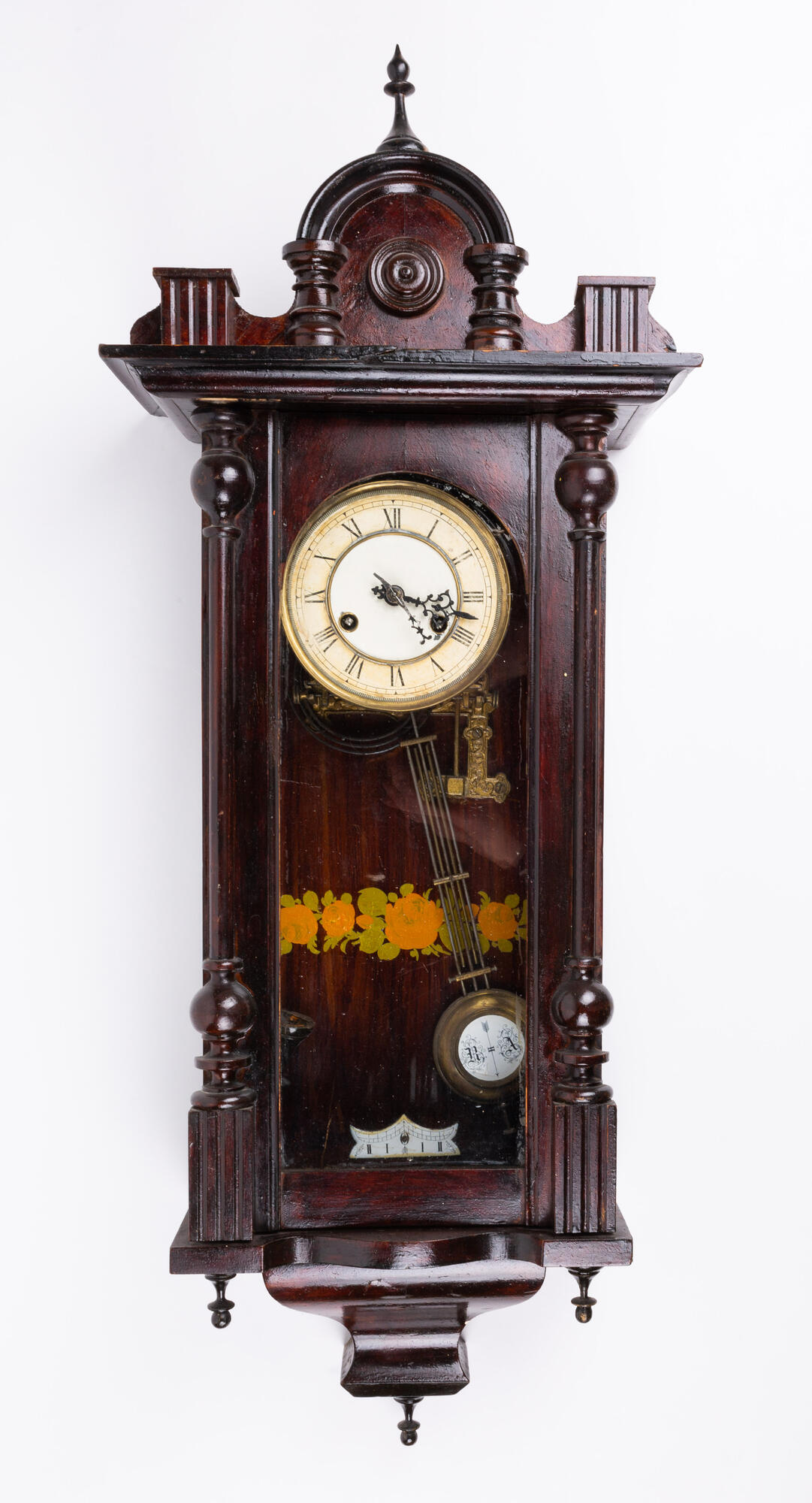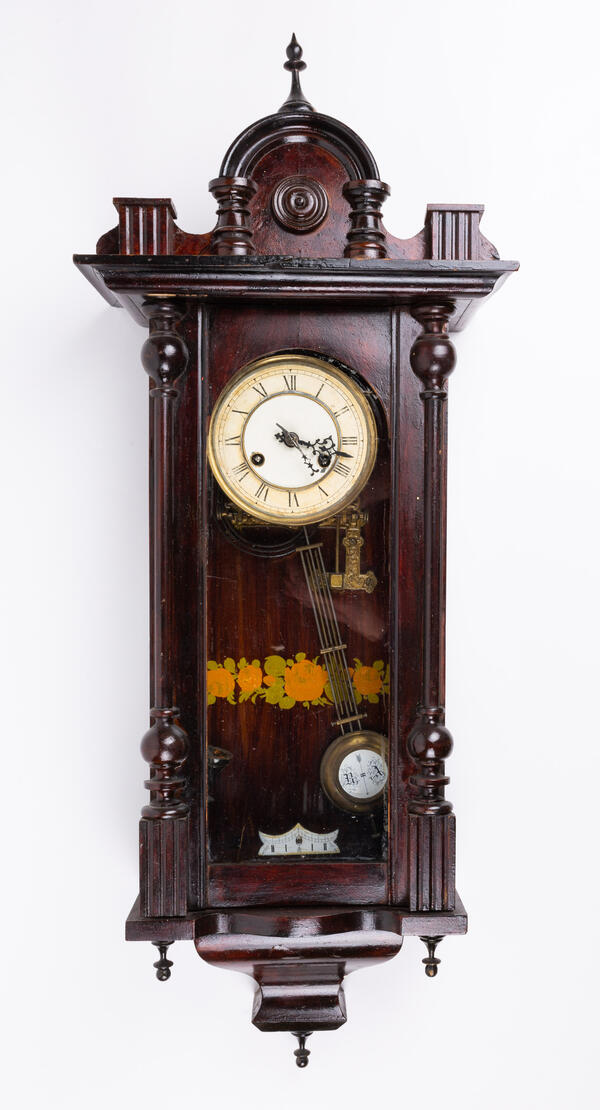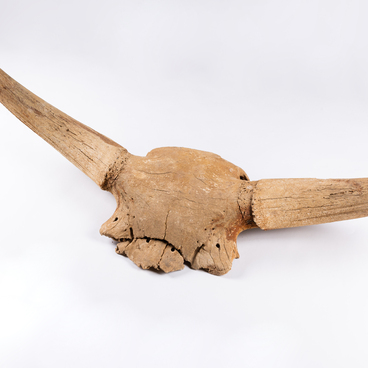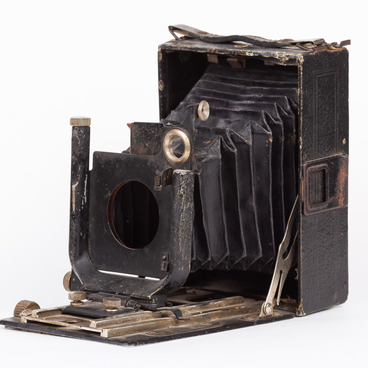In the early 20th century, Le Roi a Paris clocks were produced by many major European enterprises, specifically Shlenkler-Kienzle, Yunghans, FMS and PHS. Le Roi a Paris translates as the King of Paris, but interestingly enough, all of these companies were owned by German clock-makers, not French. In March 1909, the Kienzle became the first among those companies to apply to the International Patent Bureau in London, and since then, only Kienzle wall clocks could officially bear the ‘Le Roi a Paris’ inscription.
Le Roi a Paris clocks combined high quality and a reasonable price. Almost all modifications of this clock brand were fairly inexpensive, making them an easily affordable purchase for the middle class. The clocks' cost-effectiveness was ensured, above all, by the mechanism’s base plate, which had special slits n it. The clocks were exclusively spring-wound, and their faces were always coated in enamel. Their body was lacquered, with a veneer inner wall.
Le Roi a Paris had a very sturdy, respectable look, with a memorable aesthetic reminiscent of the Austrian regulator clocks, which were in vogue in the early twentieth century. This made their rise to popularity in Russia all the easier: many people loved the idea of owning a genuine high-quality German clock with a touch of French charm.
Choosing Le Roi a Paris as the model’s name was a cunning marketing move. The idea was to make potential buyers think of the legendary Julien Le Roy, the personal clock-maker of King Louis the 15th. Julien Le Roy was known around the world as the creator of intricate clockwork mechanisms that rivaled even English clocks, which were considered flawless paragons. Julien’s son, Pierre Le Roy, followed in his father’s footsteps: he became an inventor, clock-maker, and scholar of various chronometric anomalies. His substantial contribution to the development of navigation earned him a prestigious prize from the French Academy of Sciences.
Ultimately, this association the fabled dynasty of French clock-makers was meant to encourage the audience to purchase Le Roi a Paris for an affordable price.
Le Roi a Paris clocks combined high quality and a reasonable price. Almost all modifications of this clock brand were fairly inexpensive, making them an easily affordable purchase for the middle class. The clocks' cost-effectiveness was ensured, above all, by the mechanism’s base plate, which had special slits n it. The clocks were exclusively spring-wound, and their faces were always coated in enamel. Their body was lacquered, with a veneer inner wall.
Le Roi a Paris had a very sturdy, respectable look, with a memorable aesthetic reminiscent of the Austrian regulator clocks, which were in vogue in the early twentieth century. This made their rise to popularity in Russia all the easier: many people loved the idea of owning a genuine high-quality German clock with a touch of French charm.
Choosing Le Roi a Paris as the model’s name was a cunning marketing move. The idea was to make potential buyers think of the legendary Julien Le Roy, the personal clock-maker of King Louis the 15th. Julien Le Roy was known around the world as the creator of intricate clockwork mechanisms that rivaled even English clocks, which were considered flawless paragons. Julien’s son, Pierre Le Roy, followed in his father’s footsteps: he became an inventor, clock-maker, and scholar of various chronometric anomalies. His substantial contribution to the development of navigation earned him a prestigious prize from the French Academy of Sciences.
Ultimately, this association the fabled dynasty of French clock-makers was meant to encourage the audience to purchase Le Roi a Paris for an affordable price.



